
This past week I tested the BabyCook Classic, and after making apple sauce and whipping up a few turkey dinner leftovers, I can’t imagine what parent wouldn’t absolutely love having a BabyCook.
When you have a baby you want to be sure they’re getting the best of everything, and that especially applies to the food they consume when they’re about to try solids for the first time.
When I had my first baby I knew I had to go through the steps of trying a new vegetable or fruit after you did cereal, so I went out and loaded up on jarred baby food for when she was ready. This was 13 years ago, so they didn’t have organic baby food as readily available as they do now.
I picked a jar of peas, butternut squash, carrots, and a banana to start, and when she had worked her way through every cereal, I popped open the jar to heat it up. That’s when I encountered my first problem: the smell. I understand you have to puree to get the baby food so it’s the consistency it has to be to feed it to a young baby, but the peas smelt putrid and they looked just a bit too green.
The same thing went for the carrots, and although the butternut squash was the same color it should have been, when I went to taste it I thought it was just short of disgusting. The bananas I liked, but I wasn’t too sure about that either because the ingredients list contained ascorbic acid to maintain the color.
Although I’m sure that most baby food manufacturers focus on safe, healthy food for babies to eat, my own taste test made me toss the jars and look for another option. I couldn’t imagine feeding that stuff to my daughter. Peas are supposed to taste like peas, and bananas should be yellow because they’re fresh, not because you added something to them.
Although I knew next to nothing about making baby food, I dug out my blender, food processor, and ice cube trays and worked my way through the list of vegetables, fruits, and, as she got older, I even got a little creative in combining a few ingredients to make stews and desserts.
I had three more babies after her, and I always made their baby food. The only problem? It was a labor-intensive process. You had to steam in a pot or steamer and then blend. Looking back on it now, I spent a lot of hours making baby food on top of making dinner, breakfast, and lunch for everyone else, and if I would have had a Beaba Babycook, I could have spent half the time in the kitchen.
I was asked to review the Beaba Babycook this past week, and I found it really does it all: it steams and blends the food you’re making for your baby so it’s fresh and ready to serve. If you’re serving food you’ve stored, it can warms and defrosts your baby food too.
Here’s a look at the Beaba Babycook and how it works:
Features & Appearance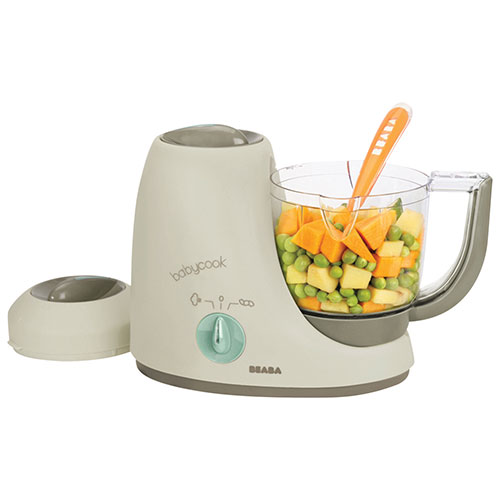
The Beaba Babycook Classic comes in a compact little package that looks like a mini-food processor. It’s very small, so it can easily fit in a drawer or on the corner of your kitchen cabinet, and it’s made from BPA free plastic so it’s extremely durable.
A few of the features on the Beaba Babycook include:
- Creates babyfood from raw food including fruit, vegetables, meat, and fish
- Grows with your baby as they age up through food stages
- Steams, purees, defrosts, and reheats food
- Makes fresh baby food in as little as 15 minutes
- The bowl holds 3.7 cups so you can make extra and freeze it
- Created free of BPA, Lead, and Phthalate
Testing the Beaba Babycook classic
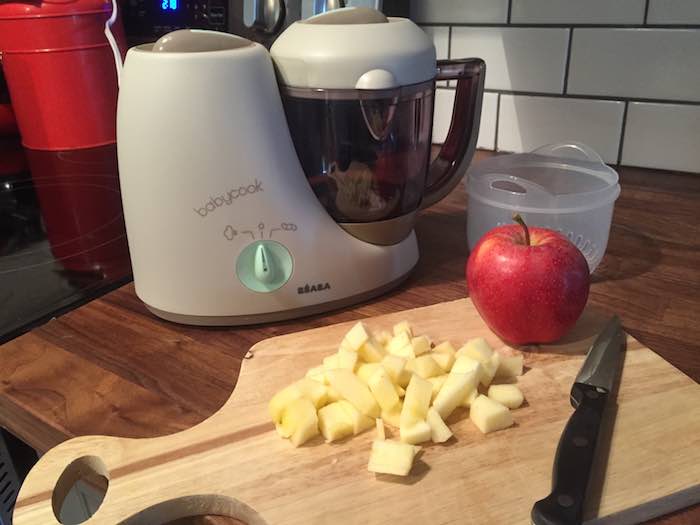 Babycook, where were you when I was toiling in the kitchen making huge batches of baby food? I can’t believe how easy it is to whip up fresh food with it.
Babycook, where were you when I was toiling in the kitchen making huge batches of baby food? I can’t believe how easy it is to whip up fresh food with it.
To test the Babycook I started with the baby food standard: applesauce. I’ve made my own applesauce by boiling apples in a huge stockpot and pureeing them in a blender. It always takes quite awhile because I make such a big batch, and you also have to go through the process of preserving it in jars or freezing it in cubes.
To start I peeled and cubed some apples. I added the appropriate amount of water to the Babycook reservoir and turned on the steamer. After I started steaming I did some reading online about creating applesauce in the Babycook and quite a few parents recommended leaving the skins on the apples on. Apparently the steamer does its job so well that the skin melds into the apple, and because the skin is so healthy, it’s best to leave it on.
It took about 10 minutes before the steamer was ready, and when it is you can drain off any excess water and use the spatula to remove your apples. If your baby is older, you might not want to use the puree function. The apples came out soft and were very easy to smash with a fork.
If your baby is young and you want a good puree, all you have to do is switch to the blend function. I turned it on and let it blend for a minute, then checked the consistency. It was fairly smooth with only a few lumps, so I let it blast again for another minute and it was ready to go.
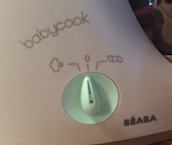 Having a Babycook around means you can make fresh food to serve immediately. It doesn’t make a huge batch, but what it does make you can serve immediately or store for the next day.
Having a Babycook around means you can make fresh food to serve immediately. It doesn’t make a huge batch, but what it does make you can serve immediately or store for the next day.
The Babycook can also steam small chunks of meat, so you can put fish, tiny strips of steak, or chicken in the Babycook. My recommendation for that would be to cut them very, very small. The steamer seems heavy duty enough to cook a small piece of meat thoroughly, so you shouldn’t have to worry that it’s undercooked.
There’s a defrost and reheat function as well, and I put some mashed potatoes, peas, and pre-cooked turkey in to reheat just as a test. It took about 5 minutes before they were warm enough to serve so it’s not as speedy as a microwave, but it’s a great option if you’re away from home or if you don’t have a microwave. I did a quick blend after they were cooked and they pureed up nice and smooth.
The cookbook and instructions aren’t as detailed as I would have liked, and the biggest challenge I had was figuring out how much water to put in the reservoir in order to cook the food. Another thing to note: the water in the reservoir gets really, really hot, so watch out if you open the lid or if you’re pouring any out.
The other thing to note: when you’re pureeing with the Babycook you have to hold the puree button. You can’t turn it on and walk away to do something else, but it only takes a minute or two so it’s not inconvenient.
Take a look at my quick video to see how easy it is to use the Babycook.
Clean up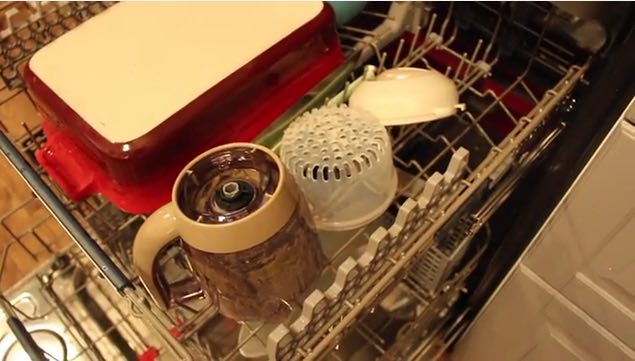
Because the blender and spatula are dishwasher safe, all you have to do is pop them on your top rack and they’ll be clean for next time.
Overall thoughts
I liked the Babycook a lot, and because of the size, ease of use, and all-in-one ability to create fresh baby food, I’d highly recommend it. Take a look at the Babycook Classic on Best Buy right now.
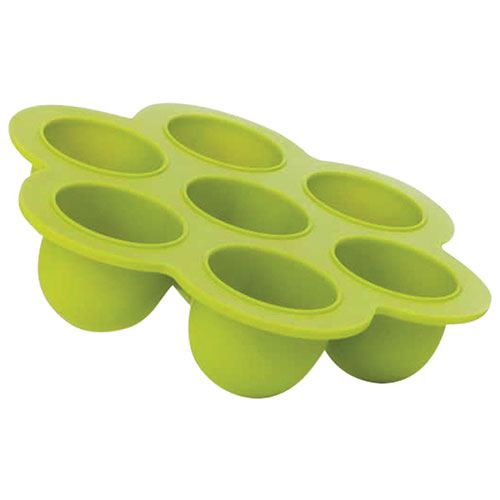 Store your Babycook food in Beaba multiportion food trays |
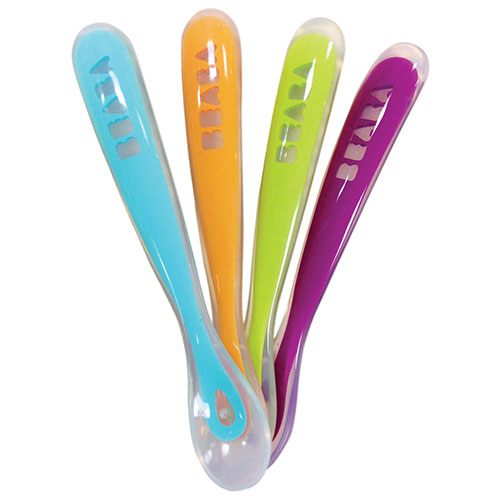 Beaba spoons are made of silicon and are BPA free |
 There’s no end to the ideas you’ll have for baby food with the babycook book |
Save



